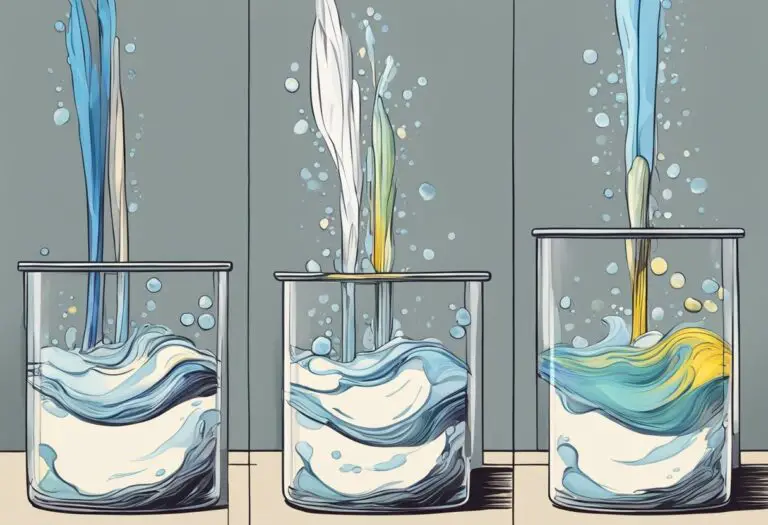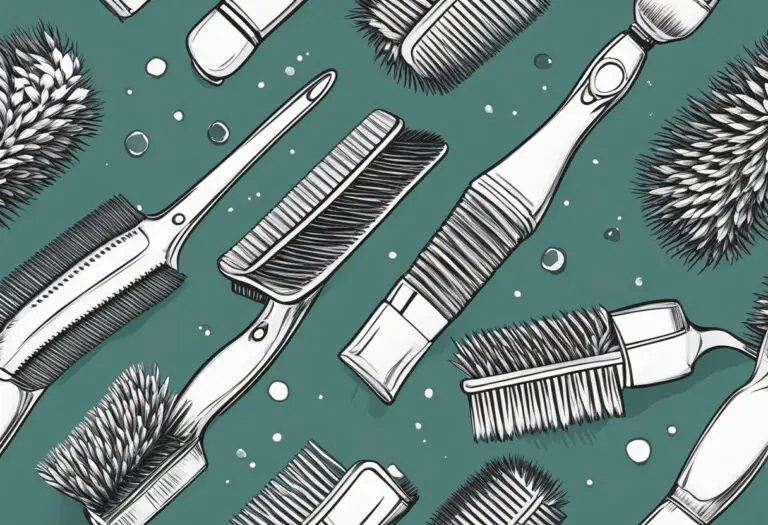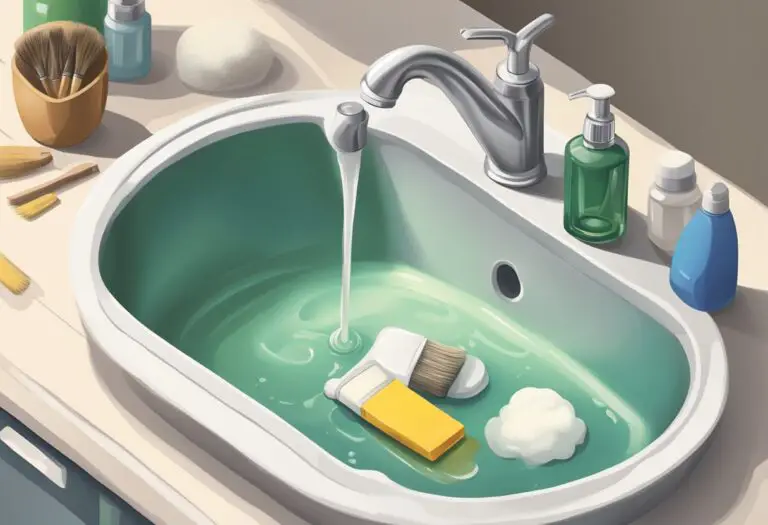How can I avoid cross-contamination of paint colors when using multiple brushes
How to Avoid Cross-Contamination of Paint Colors with Multiple Brushes
When painting with multiple colors, it can be challenging to avoid cross-contamination of paint colors when using multiple brushes. Cross-contamination happens when paint from one brush mixes with another, causing the colors to blend and become muddied. This can be frustrating, especially when working on a project that requires precise color application. Fortunately, there are several ways to avoid cross-contamination when using multiple brushes.

One way to prevent cross-contamination is by using separate brushes for each color. This may seem like an obvious solution, but it’s essential to have enough brushes on hand to avoid using the same brush for multiple colors. It’s also important to clean each brush thoroughly after use to prevent any residual paint from mixing with the next color.
Another way to avoid cross-contamination is by using a palette or paint tray with separate wells for each color. This allows the artist to keep each color separate and prevents them from accidentally dipping their brush into the wrong color. It’s also essential to avoid double-dipping, which is when a brush is dipped into a color, used on the canvas, and then dipped back into the same color. This can cause the paint to become contaminated and muddy the colors.
Understanding Paint Cross-Contamination

When using multiple brushes to paint with different colors, it’s important to avoid cross-contamination. Cross-contamination occurs when paint from one brush mixes with another, resulting in colors that are different from what the artist intended. This can have a negative impact on the final artwork, making it look dull or muddy.
Causes of Color Mixing
There are several causes of color mixing when using multiple brushes. One of the most common causes is using the same water container for all brushes. When rinsing a brush in the water container, some of the paint can be left behind, contaminating the water. If another brush is then rinsed in the same container, it can pick up the contaminated water and mix with the paint on the brush, resulting in unintended color mixing.
Another cause of color mixing is using the same palette for all colors. When using a palette knife to mix colors, some of the paint can be left behind on the palette. If another color is then mixed on the same spot, it can pick up the leftover paint and mix with the new color, resulting in unintended color mixing.
Impact on Artwork
Cross-contamination can have a negative impact on the final artwork. When colors are mixed unintentionally, the resulting color can be dull or muddy, making the artwork look unappealing. In addition, if the artist is trying to create a specific color or shade, cross-contamination can make it difficult to achieve the desired result.
To avoid cross-contamination, it’s important to use separate water containers for each brush and to clean the palette thoroughly between colors. It’s also a good idea to keep a separate brush for each color, especially when working with a limited palette. By taking these precautions, artists can ensure that their colors remain vibrant and true to their intended shades.
Proper Brush Selection

When using multiple brushes for different paint colors, it is important to select the right brushes to avoid cross-contamination. Here are some tips for proper brush selection:
Brush Types and Purposes
Different brushes are designed for different purposes. For example, flat brushes are ideal for painting large areas, while round brushes are better suited for detailed work. It is important to choose the right brush for the job to achieve the desired result.
Matching Brushes to Paint Types
Matching the brush to the type of paint being used is also important. For example, natural bristle brushes are best for oil-based paints, while synthetic brushes are better suited for water-based paints. Using the wrong type of brush can result in poor quality work and can also damage the brush.
When selecting brushes for multiple paint colors, it is recommended to have a separate brush for each color to avoid cross-contamination. This will ensure that the colors remain pure and vibrant, and will also extend the life of the brushes.
In summary, proper brush selection is crucial for achieving high-quality results and avoiding cross-contamination of paint colors. By choosing the right brush for the job and matching it to the type of paint being used, painters can achieve the desired result and extend the life of their brushes.
Brush Cleaning Techniques
When using multiple brushes, it is important to avoid cross-contamination of paint colors. One of the best ways to prevent cross-contamination is to clean your brushes properly. In this section, we will discuss some effective brush cleaning techniques.
Immediate Cleaning Methods
Immediate cleaning methods involve cleaning your brush after each use. This is a great way to prevent cross-contamination of paint colors. Here are some immediate cleaning methods:
- Wiping: After using a brush, wipe it with a clean cloth or paper towel to remove excess paint.
- Rinsing: Rinse the brush under running water to remove any remaining paint.
- Brush Spinner: A brush spinner is a tool that can be used to spin the brush and remove excess paint.
Deep Cleaning Solutions
Deep cleaning solutions involve thoroughly cleaning your brushes to remove all paint. This is important to do on a regular basis to prevent build-up of paint on your brushes. Here are some deep cleaning solutions:
- Soap and Water: Use soap and water to clean your brushes. This is a gentle and effective way to clean your brushes.
- Brush Cleaner: There are many brush cleaners available on the market that can be used to clean your brushes. These cleaners are specifically designed to remove paint from brushes.
- Vinegar Solution: A vinegar solution can be used to deep clean your brushes. Mix equal parts of vinegar and water and soak your brushes in the solution for a few hours.
By using these brush cleaning techniques, you can avoid cross-contamination of paint colors when using multiple brushes. Remember to clean your brushes regularly to keep them in good condition.
Workspace Organization

When using multiple brushes and paint colors, it’s important to keep your workspace organized to avoid cross-contamination. Here are some tips for keeping your workspace clean and organized.
Color Segregation Strategies
One effective strategy for avoiding cross-contamination is to segregate your colors. This can be done by using separate palettes or containers for each color, or by using separate sections of a larger palette for each color. Labeling each container or section with the corresponding color can help you keep track of which brush to use for each color.
Another strategy is to use separate brushes for each color. This can be especially useful when working with small details or when switching between colors frequently. Keeping a set of brushes for each color can help you avoid accidentally mixing colors on your brushes.
Maintaining a Clean Palette
Keeping your palette clean is another important step in avoiding cross-contamination. Use a clean palette for each painting session, and clean your palette and brushes regularly throughout your session. You can use a damp cloth or paper towel to wipe excess paint off your brushes and palette, or use a cleaning solution designed for artists’ materials.
When you’re finished painting, make sure to thoroughly clean your brushes and palette. Rinse your brushes in clean water and reshape the bristles, and use a cleaning solution to remove any remaining paint from your palette. Storing your brushes and palette in a clean, dry place can help prevent contamination between painting sessions.
By following these simple tips for workspace organization, you can avoid cross-contamination and create beautiful, vibrant paintings with multiple colors.
Best Practices for Multi-Brush Projects

When working on a project that requires the use of multiple brushes and different paint colors, it is important to take steps to avoid cross-contamination. Here are some best practices to follow:
Sequential Color Application
One effective way to avoid cross-contamination is to use each brush for a single color, and apply the colors sequentially. This means starting with the lightest color and working towards the darkest. By doing this, any leftover paint on the brush will not affect the next color, as it will be darker and cover up any residue.
Avoiding Overloading Brushes
Another way to prevent cross-contamination is to avoid overloading brushes with too much paint. When a brush is overloaded, the excess paint can seep into the ferrule (the metal part that holds the bristles), and mix with the other colors. To avoid this, use a palette to control the amount of paint on the brush, and wipe off any excess before switching to a new color.
By following these best practices, you can ensure that your multi-brush projects are free from cross-contamination, and that your colors remain true and vibrant.







